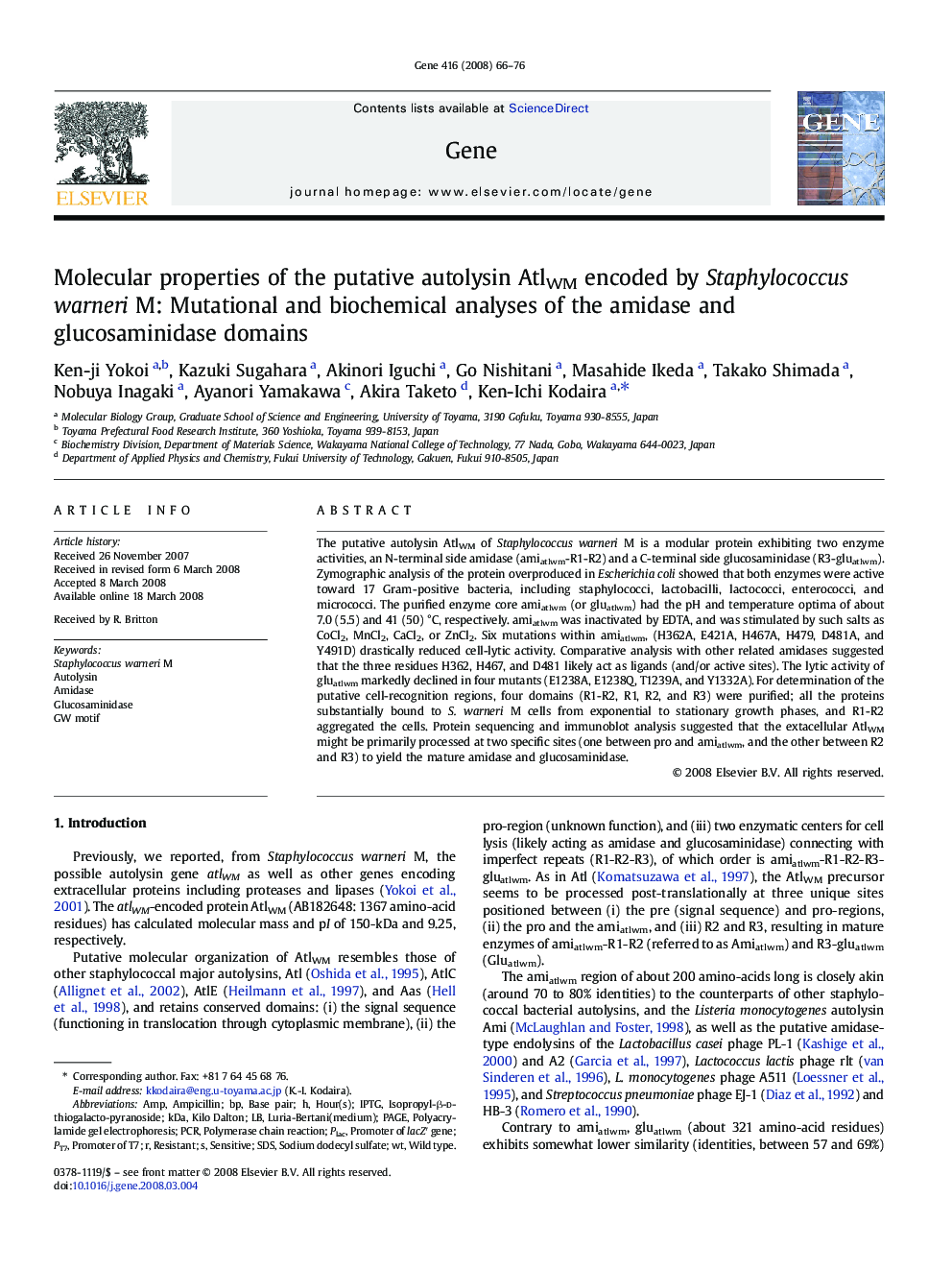| Article ID | Journal | Published Year | Pages | File Type |
|---|---|---|---|---|
| 2819331 | Gene | 2008 | 11 Pages |
Abstract
The putative autolysin AtlWM of Staphylococcus warneri M is a modular protein exhibiting two enzyme activities, an N-terminal side amidase (amiatlwm-R1-R2) and a C-terminal side glucosaminidase (R3-gluatlwm). Zymographic analysis of the protein overproduced in Escherichia coli showed that both enzymes were active toward 17 Gram-positive bacteria, including staphylococci, lactobacilli, lactococci, enterococci, and micrococci. The purified enzyme core amiatlwm (or gluatlwm) had the pH and temperature optima of about 7.0 (5.5) and 41 (50) °C, respectively. amiatlwm was inactivated by EDTA, and was stimulated by such salts as CoCl2, MnCl2, CaCl2, or ZnCl2. Six mutations within amiatlwm, (H362A, E421A, H467A, H479, D481A, and Y491D) drastically reduced cell-lytic activity. Comparative analysis with other related amidases suggested that the three residues H362, H467, and D481 likely act as ligands (and/or active sites). The lytic activity of gluatlwm markedly declined in four mutants (E1238A, E1238Q, T1239A, and Y1332A). For determination of the putative cell-recognition regions, four domains (R1-R2, R1, R2, and R3) were purified; all the proteins substantially bound to S. warneri M cells from exponential to stationary growth phases, and R1-R2 aggregated the cells. Protein sequencing and immunoblot analysis suggested that the extacellular AtlWM might be primarily processed at two specific sites (one between pro and amiatlwm, and the other between R2 and R3) to yield the mature amidase and glucosaminidase.
Keywords
Related Topics
Life Sciences
Biochemistry, Genetics and Molecular Biology
Genetics
Authors
Ken-ji Yokoi, Kazuki Sugahara, Akinori Iguchi, Go Nishitani, Masahide Ikeda, Takako Shimada, Nobuya Inagaki, Ayanori Yamakawa, Akira Taketo, Ken-Ichi Kodaira,
